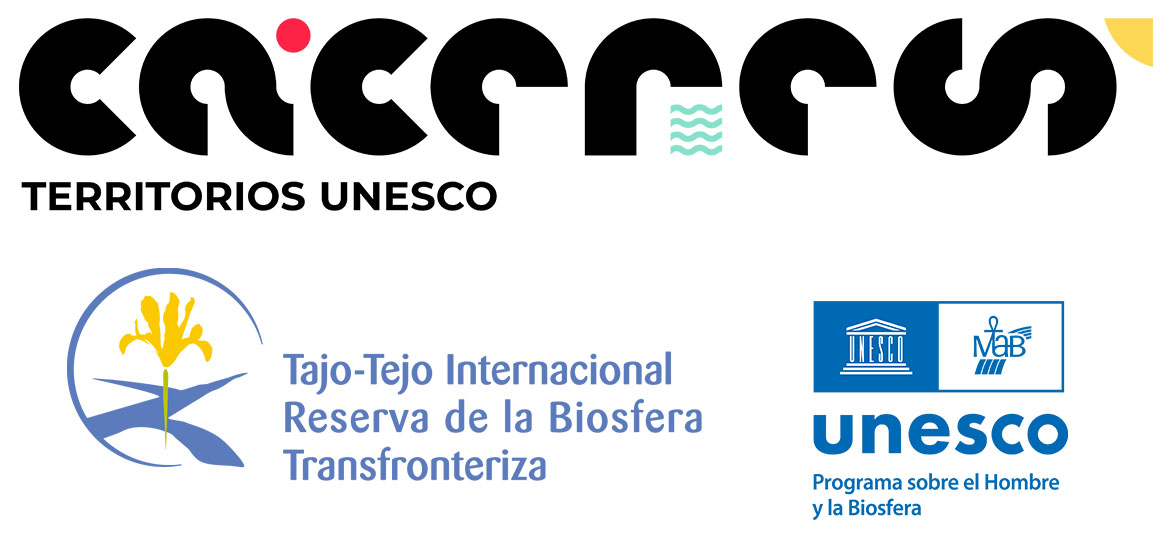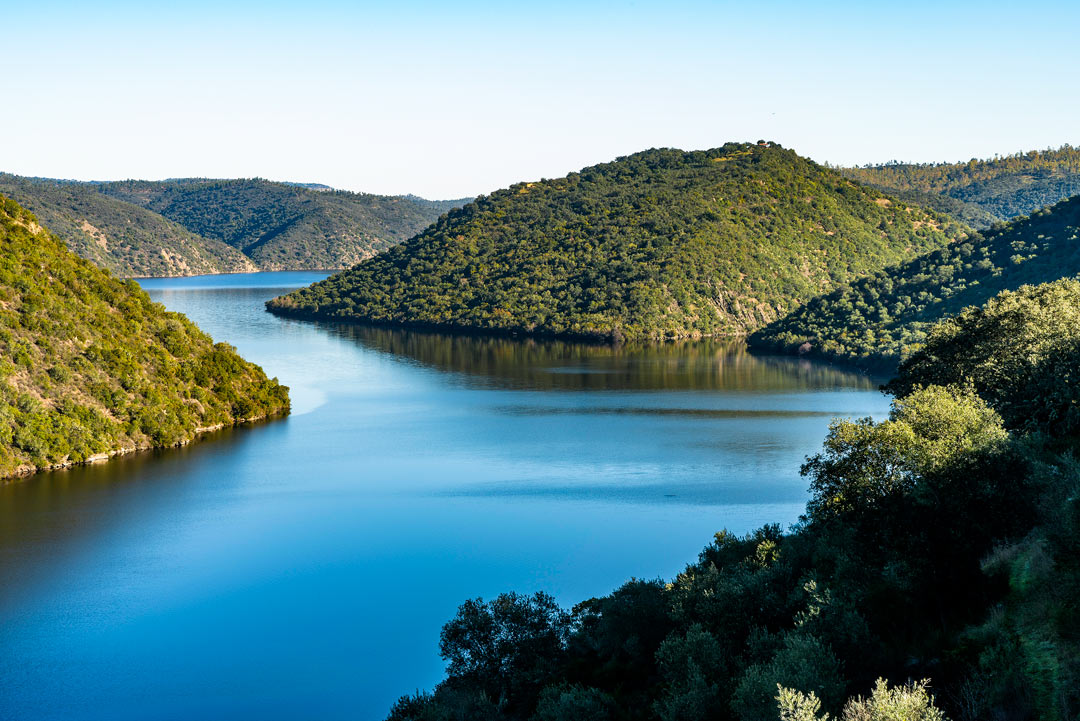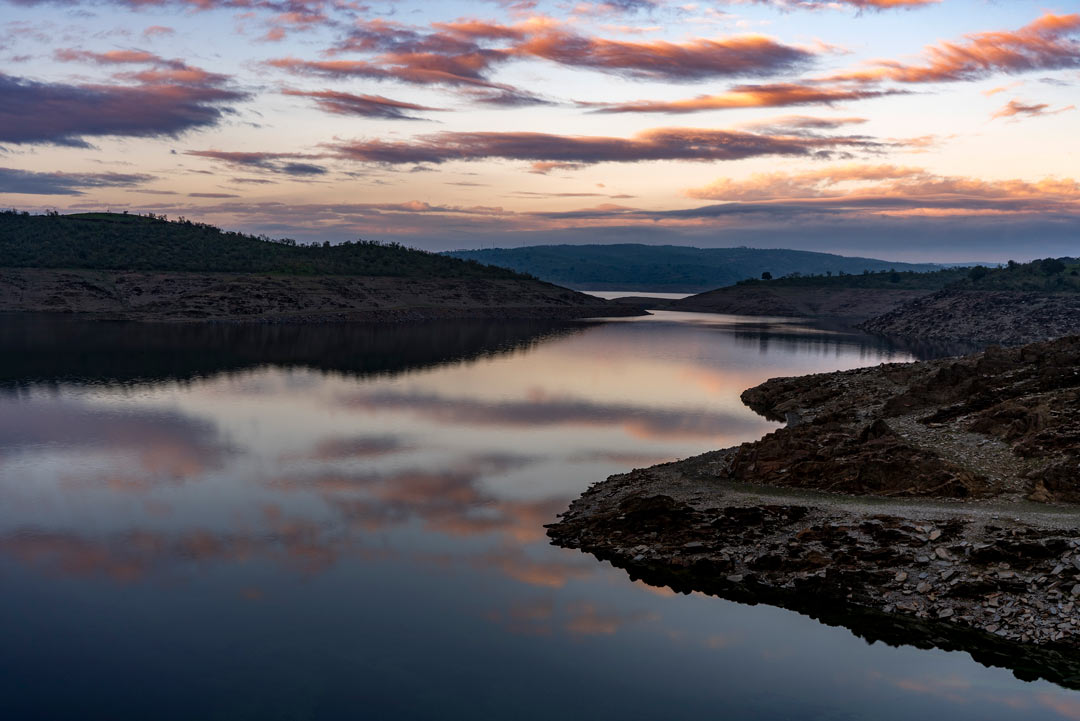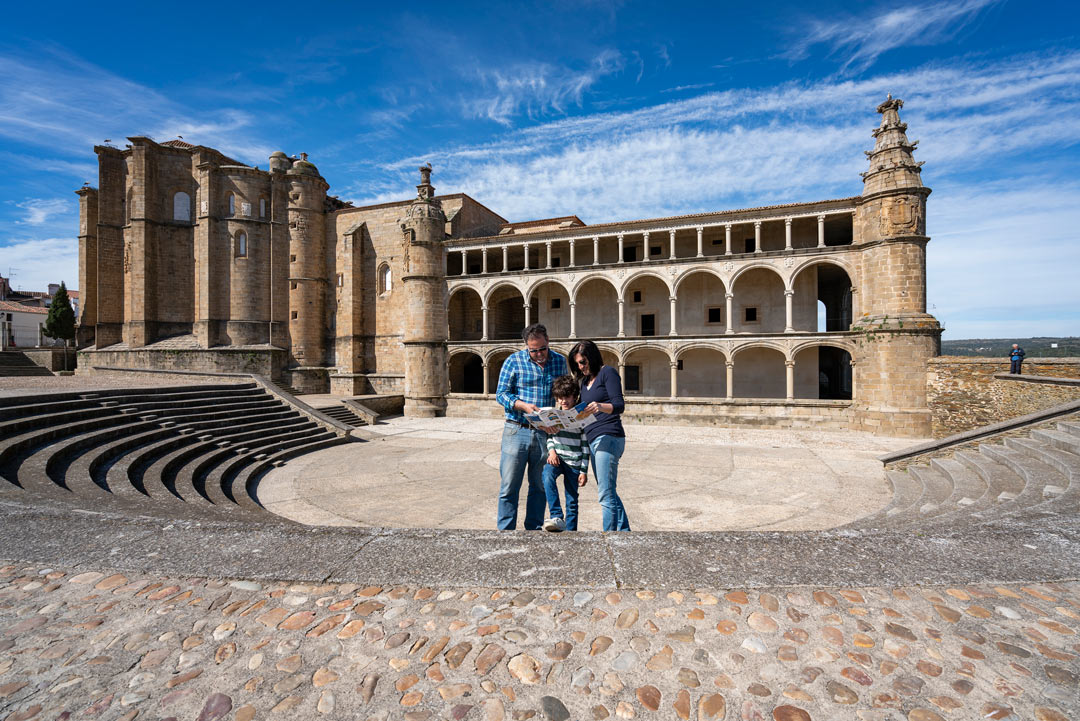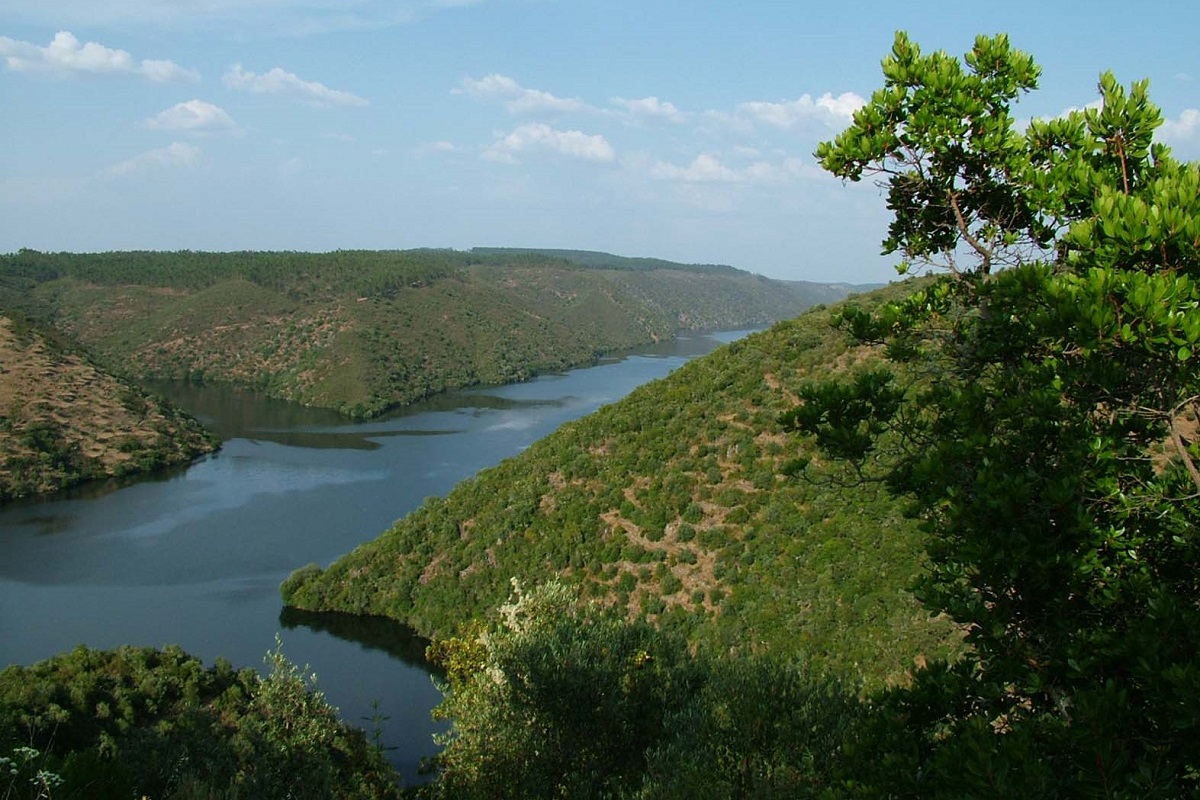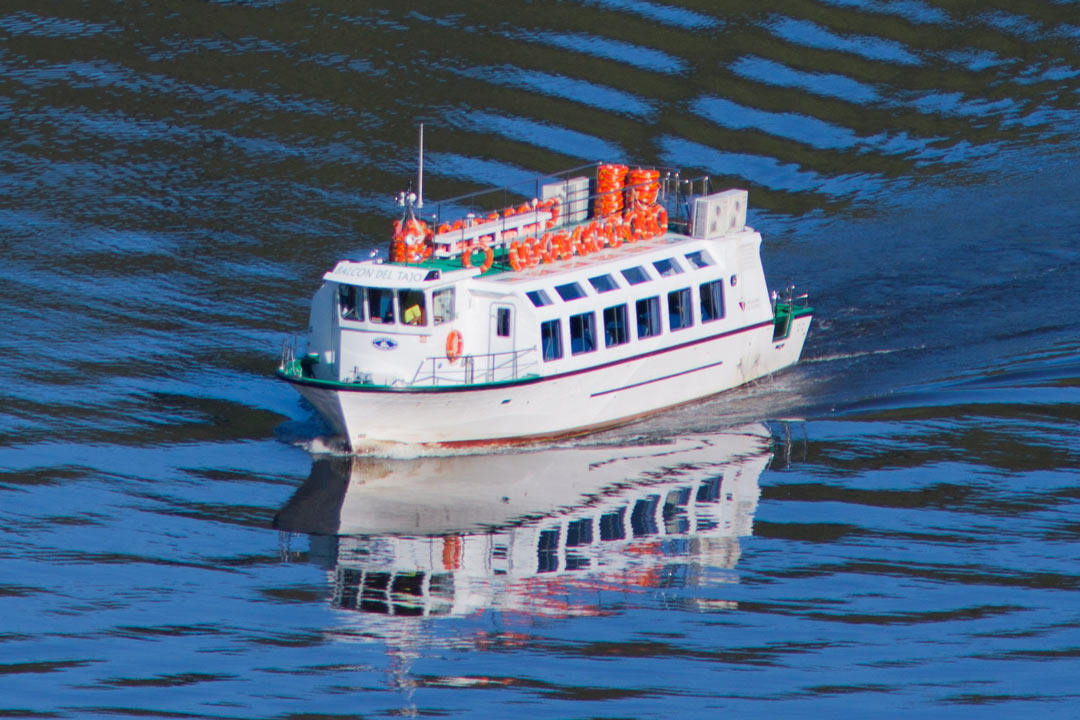The Tajo
The river which joins two countries
The Tajo Internacional Biosphere Reserve is a magnificent example of natural and cultural heritage connected with water. Throughout history rivers have determined territories, delimited frontiers, drawn landscapes, and seen the flourishing of the cultures which have used their waters as a source of life.
The Tajo is the longest river in the Iberian Peninsula. Its waters furrow its central area from east to west with a slight incline towards the south, which is apparent above all when it approaches Portugal and seeks its mouth in the estuary of Lisbon.
The Tajo is therefore that ‘river that carries us’ as the novel of José Luis Sampedro would have it. In this case it carries us to that natural boundary which is shaped in this part of the peninsula between Spain and Portugal; a watery frontier of 47 kilometres.
Sever, Erjas, and Salor, tributaries of the great river
In its passage through the northwest of the province of Cáceres the Tajo shapes a peneplain of great beauty full of rocky places, extensive dehesas, pools, and two other important rivers which bring it volume and bring it life. Its tributaries, the rivers Erjas, Sever, and Salor, provide the bones of this territory together with the great River Tajo. The life of the Tajo Internacional Cross-border Biosphere Reserve revolves around this river. The nature of this territory is exuberant and it is a place full of history in which human beings have been living in harmony with nature for thousands of years.
Despite the fact that centuries of history have marked the frontier character of the territory in the Tajo Internacional Biosphere Reserve, now these frontiers are becoming blurred because natural spaces know nothing of divisions and merge among ruins, wild landscapes, and lots of freshwater.
The Spanish side
We are in a wild landscape of peneplains and dehesas dominated by the River Tajo in an area of 25,088 hectares which shelters typical Mediterranean species. Some of these are in danger of extinction such as the shy black stork which can be found on the banks of the River Tajo in an idyllic place to nest.
In these waters we can see otters, river crabs, and a multitude of fish. And if we look at the sky we will see Spanish imperial eagles, short-toed eagles, little owls, or Egyptian, griffon, and black vultures riding the winds at ease in search of carrion. Moreover, mammals such as red deer, wild boar, and rabbits also form part of this biodiversity.
The Tajo Internacional Biosphere Reserve is life and this is shown by its abundant flora such as the yellow flag and the serapia verde, a very rare orchid in danger of extinction which also finds here perfect conditions for its development. Moreover, the Montpellier maple, the snapdragon, the bugloss, the juniper, the hyacinth, and angel’s tears fill the Biosphere Reserve with colour.
The Portuguese side
The Tajo makes its mark even on the toponymy of the area. We are in the Alentejo which means “beyond the Tajo”; several municipal districts of this region belong to the Tajo Internacional Biosphere Reserve such as Gavião, Nisa, Castelo de Vide, and Portalegre. Moreover, the Beira Baixa region includes Penamacor, Idanha-a-Nova, Castelo Branco, and Vila Velha de Rodão.
Visiting the Portuguese side of the Tajo Internacional Biosphere Reserve is being transported to days gone by. An area full of authenticity thanks to its rich artistic and ethnographical heritage surrounded by memorable landscapes, which also contain megalithic remains and innumerable relics of Roman, Visigothic, and Jewish culture.

